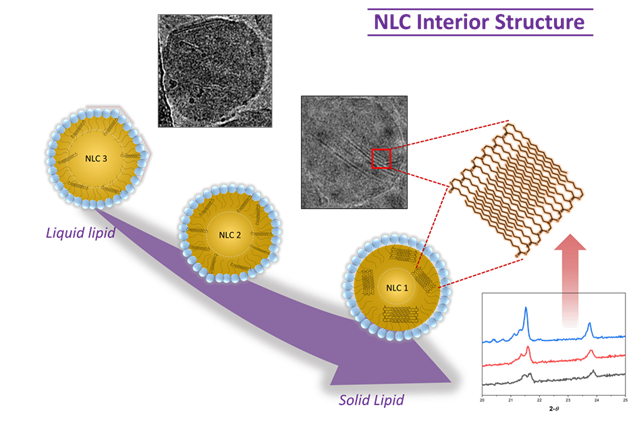2022 Annual Meeting
(16i) Disclosing Interior Structure of Nanostructured Lipid Carriers: Relation of Core-Shell Structure to Lipid Composition
Authors
In our previous study, we evaluated the self-assembly properties of NLC, which was fabricated by Cetyl Palmitate (CP) and Caprylic Triglycerides (CaTG) as the solid and liquid lipid, also Tween 80 (T80) as the surfactants. A summary of the self-assembly state was also provided in the ternary diagram estimated by comparing the membrane properties to its precursors (SLN, LE, and micelle) [Izza, N. et al. Langmuir, 2021].
As the further characterization, the current study highlights the details of interior structure and the effect of lipid composition on the structure. We conducted a comprehensive characterization to disclose the structure of the NLC, including dynamic light scattering (DLS) for measuring the hydrodynamic diameter and size distribution, fluorescence-based analysis using DPH as a fluorescence probe for evaluating the fluidity, cryo-TEM for morphological study, differential scanning calorimetry (DSC) for observing the thermal behavior of NLC, and X-Ray Diffraction (XRD) to confirm the crystalline structure and behavior.
Based on the results, NLC has a stable and monodispersed particle size of < 230 nm, which is suitable for drug delivery applications. Regarding the fluidity analysis, NLC seems to have a core-shell structure with a higher rigidity of the outer core than the inner core. This discovery is also strengthened by the DSC analysis that resulted in heterogeneity derived from polymorphs of solid lipid crystal. According to the morphological study, NLC demonstrated a spherical shape with some faceted structure in less solid lipid concentration. Almost all the captured particles in high solid lipid concentration have a crystal-like lamellar structure, proven by XRD peaks. However, the multilamellar structure could be found only in the solid lipid enriched sample. As a final evaluation, we found a linear correlation between the lipid concentration ratio and some parameters (1/Pgap, ÎH, and Crystallinity%). This relationship indicates that the lipid concentration ratio could adjust those parameters. The findings in this work give a better understanding of how the NLC interior and properties change under various solid and liquid lipid ratios.

